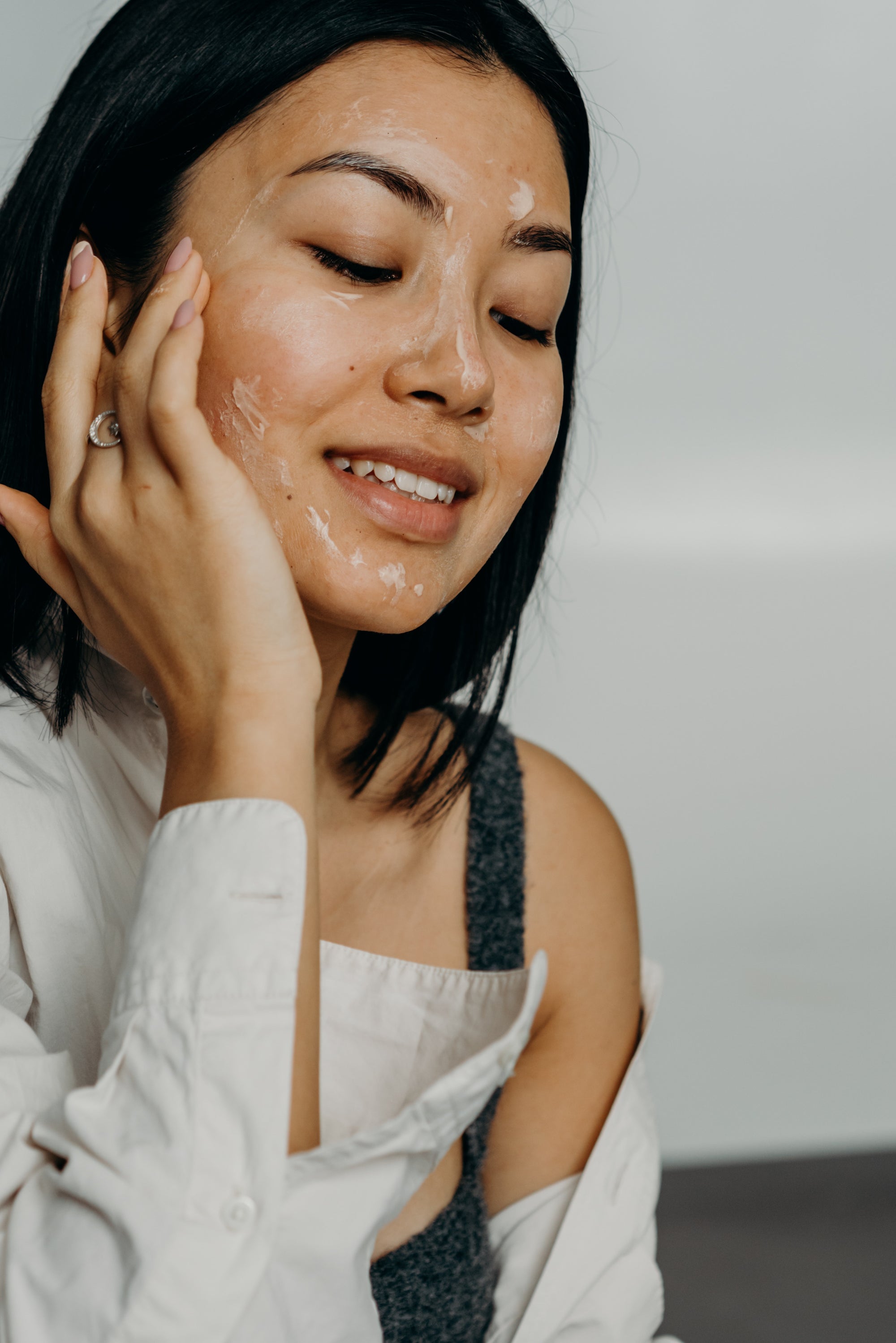

· By The Glowcery
Physical vs Chemical Exfoliation: What’s Best For My Skin Type?
Building the right skincare routine is one of the biggest wins you can make for your skin. Part of this is choosing the best products and creating a mindful routine that works with your lifestyle and skin goals. Here’s what you need to know when it comes to choosing the right exfoliator for your skin type.
Why should you exfoliate?
If you don’t already use an exfoliant in your routine, you could be missing out on smooth, glowing skin. It’s the process of removing dead skin cells and flaky, dry skin from the surface of your skin, revealing fresh, new skin underneath. If you don’t exfoliate, these dead skill cells can also build up and clog your pores.
Exfoliating can also help your skin with collagen production, which is essential for plump, glowing skin. It also helps with skin elasticity and signs of ageing like fine lines, wrinkles and sagging skin as well as hyperpigmentation and dark patches.
You should add an exfoliant into your routine 2-3 times a week to keep your skin smooth and refreshed. Exfoliating your skin too often can affect your skin barrier, so it’s important to keep it all in balance.
Physical vs chemical exfoliation: what’s the difference?
There are a couple of different types of exfoliation that you need to know about. The one you use usually depends on your skincare routine, your skin type and your own preference.
A physical exfoliating product is something that uses a physical action to remove dead skin cells. This could be manual scrubbing, rubbing or using a product that physically removes the surface of the skin - this includes scrubs, exfoliating clothes and exfoliating tools. Remember, when it comes to exfoliation, gentle is better so skip harsh scrubs that could damage your skin.
A chemical exfoliating product doesn’t use physical particles to scrub your skin. Instead, chemical exfoliants use skin-friendly chemicals to remove the “glue” that holds dead skin cells together so that they can be sloughed away.
Alpha hydroxy acids (AHAs) like glycolic acid, lactic acid, citric acid and malic acid, along with beta hydroxy acids (BHAs), like salicylic acid, are some of the more common chemical exfoliants that are used. Retinoids are also used for exfoliation too, but these can sometimes irritate the skin and make it sensitive.
What exfoliator should you use for your skin type?
Some exfoliators are more suitable for skin types than others. Here’s a rundown of what you should use for your skin type:
- Sensitive - BHAs are often less irritating than other types of exfoliants, so if your skin is sensitive you should try this.
- Normal - if you have normal skin, you can use most types of exfoliants so it totally depends on your preference.
- Dry - if you have dry, rough or flaky skin then a chemical exfoliator like glycolic acid can be used to remove dead skin cells from the surface of the skin, meaning your moisturiser can absorb more effectively.
- Oily - oily skin can really benefit from removing dead skin cells and unblocking pores. It can usually take stronger chemicals and physical exfoliators too.
- Combination - depending on the balance of your skin, you can use different types of exfoliator on the different areas of your skin.
- Acne-prone - for mild to moderate acne, retinoids, salicylic or glycolic acid can really help to unclog pores and reduce redness.

